So, you’re sitting on what might just be the next big thing in the software application world – a million-dollar idea that’s got you buzzing with excitement. You’re revved up, ready to dive in and make your mark.
But hold your horses!
Before you start spending your daughter’s college fund and call in the cavalry of developers, you need a Technical Design Document (TDD) first.
Why You Need a Technical Design Document Before Application Development

Diving into software development without a TDD is like building a house without a blueprint. Picture a builder – let’s call him Bob. Bob’s got this fantastic vision for a house: it’s unique, it’s innovative, it’s going to change the way people live. Bob’s so excited to get started that he skips the blueprints and starts building right away. You can guess what happens next, right? Walls in the wrong places, plumbing that makes no sense, and don’t get me started on the electrical work!
Your software idea is like Bob’s dream house. Without a TDD, you’re essentially building blind. The Technical Design Document is your blueprint, your guide, your recipe for success. It breaks your vision down into manageable, understandable chunks. It answers the crucial questions: What are you building? How will it work? What technologies will you use?
Why is it so important, especially for a game-changing idea like yours?
Here are some highlights that demonstrate the value of a TDD before you start investing in a project:
- Your First Reality Check – A TDD helps assess the feasibility of your software idea, addressing critical questions about scope, cost, and timeline. It’s a step Flusso Software insists on for setting up software application projects for success from the start.
- Avoid Pitfalls of Software Development – Without a TDD, projects risk misdirection and budget overruns. The TDD helps avoid common pitfalls, keeping your project on track and within budget.
- Saves Time and Money – A TDD is a cost-saving, time-managing tool. By outlining needs, resources, and timelines, it keeps application development on track and budget in check, ensuring projects don’t just start strong but finish victorious.
The Anatomy of a Successful Software Technical Design Document

A well-crafted TDD includes these elements to ensure a comprehensive plan for your software project:
- Functionality Outline: What will your software do? This section breaks down the features and capabilities of your project.
- User Journey: How will users interact with your software application? This is all about user experience and design.
- Software Schematic: The technical backbone of your project, detailing the architecture and technologies used.
- Implementation Study: A practical look at how your software will come to life, step by step.
- Investment Schedule: A clear financial plan, outlining the costs and resources needed.
- Market Research: Understanding your audience and competition to ensure your software fills a gap in the market.
Expanding on the Technical Design Document
The software TDD isn’t just a tool for you to use in deciding if your million-dollar idea will truly get you to the beach in Aruba but is invaluable to the design team once a project is given the green light. It can be considered the lifeline of development evolving throughout the development process, guiding each stage, and ensuring alignment between the envisioned product and the outcome.
A Technical Design Document often bridges the gap between vision and reality translating ideas into practical steps, serving as a communication tool for developers, managers, and stakeholders alike. It is the framework for decision-making, essential in agile development environments where adaptability is key.
It may also foster innovation by providing structure and freedom, leading to creatively inspired solutions all the while setting clear technical standards, aiding in early identification of potential issues, and proactive quality control.
Simply put, in agile environments, the TDD guides iterative development, ensuring each cycle aligns with the overall vision.
Benefits of a Software Technical Design Document
- Clarity and Direction: Just like a GPS, a TDD keeps you on track. It helps you and your team understand exactly what you’re building and how to build it. This clarity is priceless, especially when the coding gets complex, and the coffee runs low.
- Saves Time and Money: Picture this – you’re halfway through development and realize you need to make major changes. Ouch! A TDD helps avoid these costly detours and U-turns. It’s the ounce of prevention that’s worth a pound of cure.
- Communication is Key: Your team might be great, but they’re not mind readers. The TDD ensures everyone’s on the same page, reducing misunderstandings and ensuring your vision isn’t lost in translation.
- Flexibility and Adaptability: Here’s the beautiful thing – a TDD isn’t set in stone. It’s a living document that grows with your project. It allows you to adapt and evolve without losing sight of your core vision.
Bringing Your Software to Life with Flusso Software
Flusso Software’s proven process, guided by a detailed TDD, ensures that software isn’t just built but thrives in the market.
We have real-world success stories like Molly Denham’s success story with her software idea for a c-suite-level calendar management system to help busy executive assistants manage their executives with ease. Working with Flusso Software, we turned her idea into a living, breathing TDD that turned her concepts into realities and showed her that she could do so much more.
Without the software’s TDD she may have spent years deciding whether to start the project, invest her own money in a project that had no direction or form, and probably have given up after spending her life savings. We are working with people right now with this same horror story.
With the Technical Design Document in hand that laid out feasible functionality, solid timelines, and real cost estimates, she was able to get her idea funded. Her idea turned into the wildly successful VAST software.
The TDD as Your Software Development Compass

A TDD is more than the first step; it’s a constant companion in software development, ensuring that your vision doesn’t get lost in the complexities of development. With a well-crafted TDD, you and your project are safeguarded against pitfalls and primed for innovation and excellence.
Your software idea holds potential, and a Technical Design Document is a fundamental step toward realizing that potential. It’s about laying a strong foundation for your project, a blueprint that guides your team and aligns with your vision. So, take a moment to plan with a Technical Design Document – it’s a wise investment for turning your innovative concept into a successful software solution.



